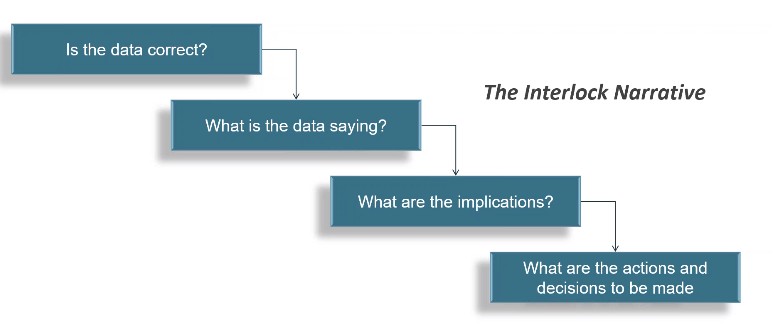Demand management starts with aligning the available capacity of resources to the amount of incoming workload. This process is not a simple mathematical equation - it requires organizations to first identify the initiatives that require resources, prioritize those requests and match the resources with the required skills. Then it takes scheduling, assigning, and evaluation to ensure the resources assigned to specific projects are indeed the best suited for the task, and finally, auditing of this process to continually optimize and deliver on the value promised. In doing this, a critical step is the ability to accurately forecast the needed labor and resources for projects. This can be a challenge, but possible when approached properly. In partnership with the Resource Management Institute (RMI), we have identified 4 areas to evaluate in the resource forecasting process to be prepared for any output level you face. As outlined in the recent RMI Power UP Session - Getting the Forecast Right: Best Practices in Accurate Forecasting for Delivery Resources and Utilization these steps include data, accountability, interlock and analysis.
Let’s take a look at each one.
Data
It’s impossible to do demand management without starting with some sort of data. Your data is what shows how much resources you used on past projects, and will help you know the amount of time and resources you’ll need on a future project. Sales data will allow you to know approximately how many projects to expect so you can prepare the needed resources. Often times, the information about your sales pipeline may be inaccurate or incomplete, reducing confidence in the data. However, you don’t need perfect sales data to get an accurate forecast. Let’s dispel the myth surrounding data .
Myth: The demand (CRM) data quality is bad and will always be that way, so I cannot do proper forecasting
This myth should be discounted because when doing demand forecasting, the greater part of your data is coming from your backlog of work and not from future sales in your pipeline. In fact:
- Backlog typically comprises 80% of the total demand capacity for your forecast
In other words, this is work that you already have, and not speculative. Plus, this makes up the biggest part of your forecasting data. While, future sales in your pipeline are still important, they are not the biggest piece of forecasting.
One of the biggest issues with data is that it isn’t in a usable format. Often sales teams will give future sales opportunities in dollar amounts, but don’t indicate the time or resource requirements. The focus should be on the resource implications such as hours and people. It’s necessary to:
- Identify WHO should define the resource requirements, HOW will they do it, and WHEN will they inform RMO for action.
When an organization defines the data they need, they can get usable and actionable information to help them know what kind of time and resources they’ll need on a given project.
These mechanisms for defining data collection might not be in place today, so they need to be put in place before gathering data. This is where a project and resource management software is essential to distribute tasks and keep data organized. Keep in mind that these mechanisms for project management will differ based on industry and organization.
Accountability
When we talk about accountability, we are referring to the people who own and are responsible for data. When accountability is not defined, we often see the wrong people trying to piece the data together which results in inaccurate forecasts. The demand facing organizations such as your sales team should be accountable for data collection because they have the most client facing insights.
In addition to defining who should compile the data, there needs to be processes for reporting the data. We want to avoid “hallway talk” where data is shared casually and speculatively. It’s important for stakeholders to have more formal meetings when discussing data, and to ask questions to get a clear picture on what is a realistic expectation of work coming out of the sales pipeline.
Frequent communication between project managers and delivery leads is critical for resource management. When stakeholders meet, its important to demonstrate the cause and effect that the proposed demand will have on us. In other words, go over the implications of your salesperson’s success with the salesperson in order to assess the real demand and make the resource preparations that are necessary. Often times you may find that the data you receive is overly optimistic. By demonstrating the business implications to your sales team, you can discuss the numbers and determine an accurate amount of demand to expect.
When you find the true demand, you should be solution oriented. Rather than fighting your sales teams about the numbers, be proactive to find a solution, and maintain good contact with those teams.
Interlock
Interlock is the process where data and accountability meet and where stakeholders come together to discuss the data and its implications for your operations. This should happen on multiple levels of your organization and meetings should be held frequently (weekly or monthly) based on your organizations needs. Remember to:
- Keep data simple
- Distribute data in advance
- Make the data future looking and action oriented
The interlock process is where you glean insights from your data and make the proper assignments and next steps that need to be taken.
Analysis
Analysis is one of the main parts of your interlock process and it’s essential to ensure that your organization understands what the data is and what it means for each group. These steps include asking the following:

When you ask these questions, you will have a clear picture of the steps that need to be taken by your organization and who is responsible. By breaking down the data, you’ll know how much capacity you have, know if you will need to bring in additional staff, and how long it will take to complete projects.
Conclusion
Remember that forecasting is not easy. It takes a lot of work to bring all the moving parts together, and the right professional services automation software to keep your data organized. You will always have imperfect data, so you’ll need to utilize what you have in the best way possible.
Interlock is the key to ensure accountability, and that the forward facing groups are providing the right data. And lastly, you need to assign next steps and tasks to ensure the work gets done to continue to improve the forecasting process.
Back to Mastering Project Resource Planning.

Rachel Hentges
Rachel Hentges is challenging PMO leaders to think differently about their role. Rachel is the author of key industry related surveys, reports, blogs and more that challenge the status quo of today’s PMOs.